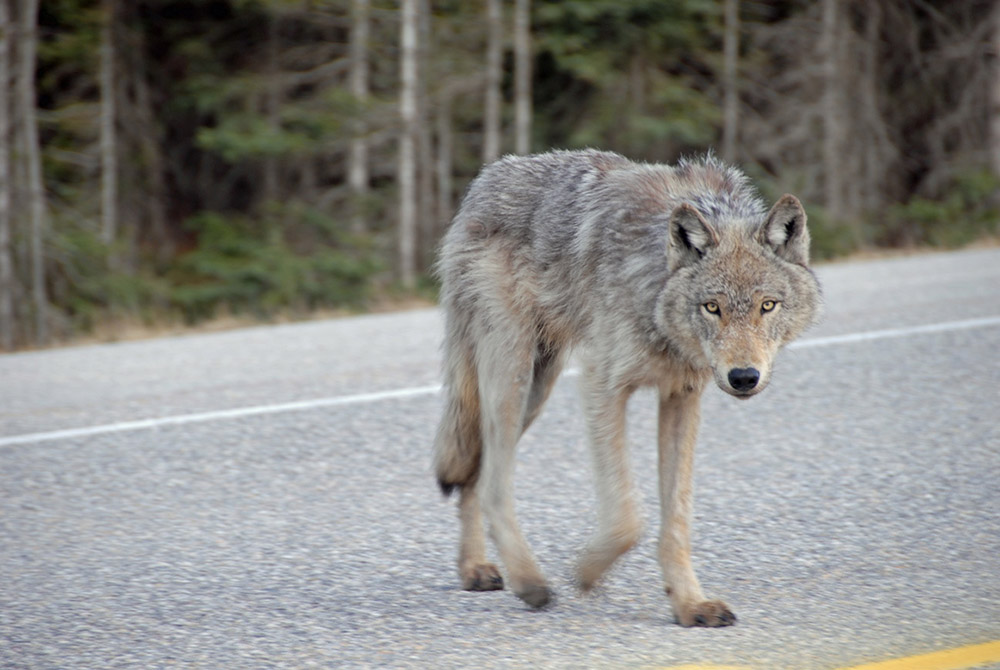Wolf 2001 shows wildlife need large landscapes in order to thrive
A two-year-old male collared wolf from the Bow Valley pack was legally shot and killed in northwestern Montana on Monday, March 8.
Wolf 2001 was tracked as it travelled more than 300 miles (480 kilometers) over several days starting in Banff National Park.
Wildlife — wolves in particular — need large, connected landscapes to thrive. To be effective, conservation must go beyond tribal, national, provincial and state borders, say conservationists.
“This wolf’s movements show that the Yellowstone to Yukon region is still connected. It also points to the major challenge that most park wolves and even grizzly bear face if they leave parks, which is human-caused deaths,” says Dr. Jodi Hilty, president and chief scientist at Yellowstone to Yukon (Y2Y) Conservation Initiative.
“This wolf tells us that places like the Bow Valley remain essential for connectivity on a continental scale, and that we need to maintain this connectivity and work hard for carnivores and people to successfully co-exist across the region into the future.”
Hilty says that right now this landscape supports the movements of wide-ranging wildlife such as wolves who need to feed, find mates and habitat.
“But keeping it this way is a job all of us need to take seriously. Roads, ranches and development can all affect wildlife’s ability to roam,” she says.
Wolf 2001’s story may be surprising, but not unusual. This is not the first well-travelled wolf biologists have tracked.
In the early 1990s a female wolf from southern Alberta named Pluie covered an area 10 times the size of Yellowstone National Park and 15 times that of Banff National Park before also being legally shot and killed.
According to Hilty, often when wolves and other wildlife leave the safety of a park boundary, they are vulnerable to death, from hunting to being hit by cars or run-ins with people.
“This is why connecting and protecting the areas near and next to parks is so important. And not just locally, either. Large landscapes such as the Yellowstone to Yukon region light up as important for connecting grizzly bears, wolverines and wolves. Governments, communities and people on all levels need to consider the needs of wildlife and work to reduce human-created barriers to movement.
“The death of wolf 2001 highlights the need for collaborative cross-border conservation between Canada and the U.S.”
According to research published in Global Conservation and Ecology in 2020, a study of 72 radio-collared grey wolves from 1987 to 2018 shows wolves from Banff National Park and surrounding area were 6.7 times more likely to die once they left the park boundary.


